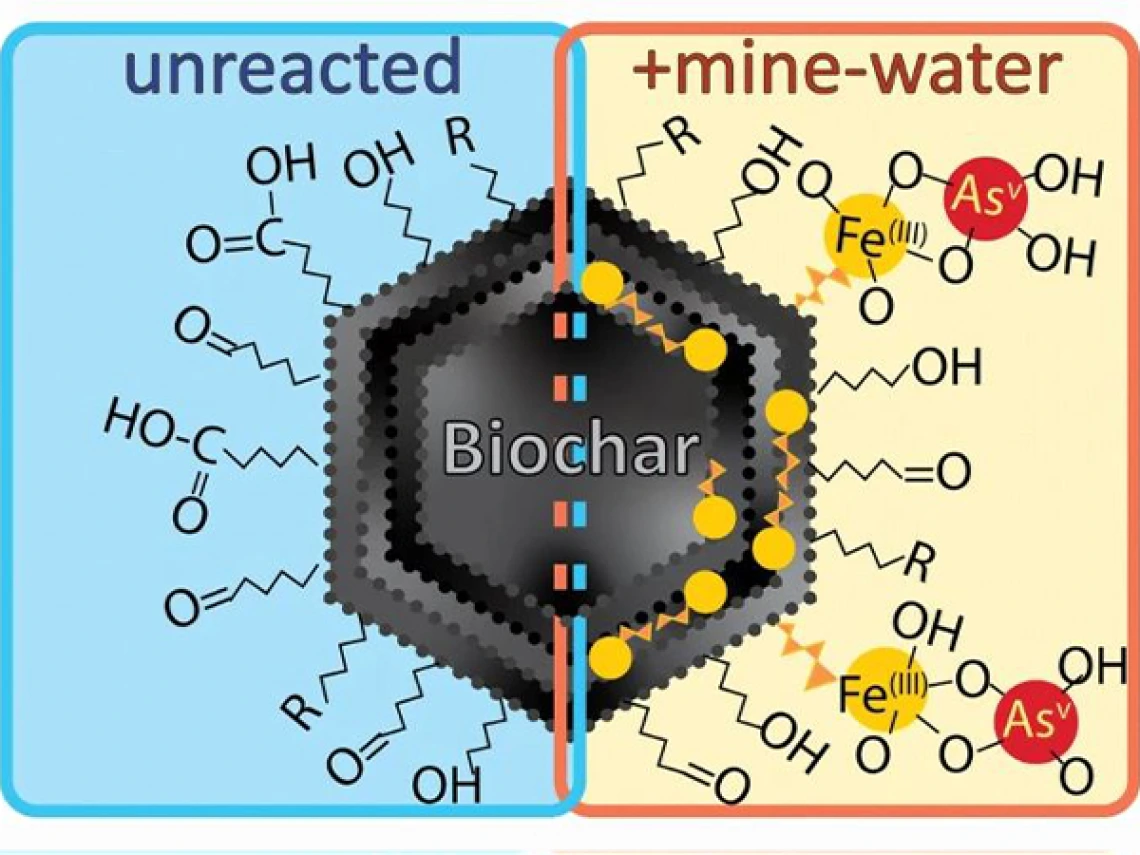Dr. Chorover Investigates the Use of Biochar to Remediate Dissolved Arsenic in Acid Mine Drainage

Dr. Jon Chorover’s University of Arizona Superfund Research Center (UA SRC) research group (Project 4: Environmental Controls on Bioavailability of Arsenic and Toxic Metals) and visiting scientist Dr. Dongmei Wang recently investigated the potential use of biochar to remediate dissolved arsenic in acid mine drainage (AMD).
Release of toxic metal(loid)s from mine tailings via AMD occurs as a result of dissolution and colloidal dispersion, both of which pose significant risk to human health if introduced to neighboring ecosystems, groundwater, or drinking water supplies.
The goal of this work was to evaluate the performance of unaltered biochar on arsenic immobilization from AMD generated from metalliferous tailings derived from a sulfide ore deposit. The molecular mechanisms whereby arsenic may be immobilized from AMD waters using unamended BC have not been reported previously, but the presence of dissolved iron originating from mine waters that can subsequently react with BC provides an ideal opportunity to examine the nature and function of iron activation for arsenic removal that would also be applicable to other contaminated sites dominated by pyritic mineralogy.
Whereas prior studies have shown that biochar is a poor sorbent for arsenate, the group’s research showed that when biochar is placed into direct contact with AMD, it can be a very effective sorbent for arsenate. The reason this type of surface works for AMD and not arsenate alone is because the dissolved iron in the AMD first nucleates and precipitates through crystal growth on the surface of the biochar, and this newly templated interface (i.e., iron oxyhydroxide coated biochar) is a highly effective sorbent for arsenate.
This work combined bench scale iron and arsenic uptake experiments with molecular spectroscopic studies (including synchrotron-based spectroscopy at both the Stanford Synchrotron Radiation Lightsource and the Canadian Lightsource) to show that once the newly formed iron oxyhydroxides precipitate on the biochar surface, then arsenate is rapidly removed from solution by binding into the iron oxyhydroxide as a bidentate-binuclear surface complex. This type of bonding mode is quite strong and retains the arsenate strongly against desorption and release back into solution.
The work suggests that simple emplacement of biochar in the flow path of AMD that contains both dissolved iron and dissolved arsenic, may be an effective strategy for remediation of AMD waste waters.
Publication:
Wang D, Root RA, Chorover J. Biochar-templated surface precipitation and inner-sphere complexation effectively removes arsenic from acid mine drainage. Environ Sci Pollut Res Int. 2021 Apr 18. doi: 10.1007/s11356-021-13869-8. https://doi.org/10.1007/s11356-021-13869-8
News Release by Canadian Light Source:
https://www.lightsource.ca/news/details/stopping_arsenic_from_contaminating_drinking_water.html

